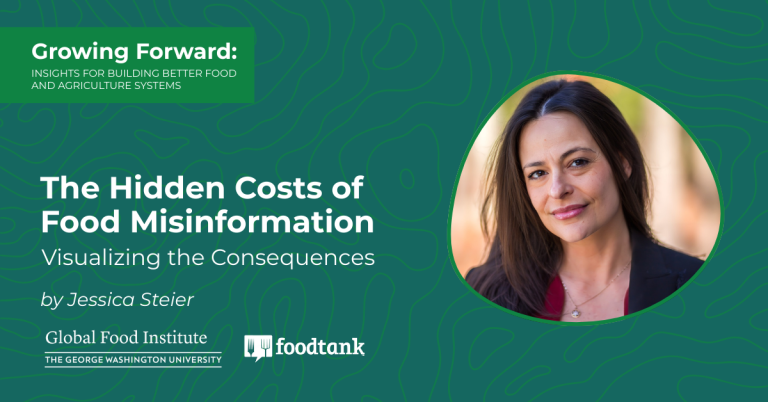The Invisible Costs of Food Misinformation: A Looming Threat to Global Food Security
A wave of food anxiety is sweeping across the globe, fueled by misinformation campaigns that demonize essential agricultural technologies and processes. This anxiety, rooted in a misunderstanding of scientific concepts like hazard versus risk, threatens to undermine decades of progress in food safety, affordability, and accessibility. Much like graphic warning labels on cigarette packs aim to convey the abstract dangers of smoking, we need a new approach to food communication—one that visually demonstrates the potential consequences of rejecting modern agricultural practices. The current narrative, driven by social media and often lacking scientific grounding, fosters a fear of ingredients and processes that are, in reality, crucial for maintaining a robust and affordable food supply.
The fear-mongering often centers around the concept of "toxic" ingredients, often highlighted in viral social media posts. These posts frequently cite studies showing harm to animals from specific ingredients, but fail to mention that the doses used are hundreds or thousands of times higher than any human would consume. The difference between hazard (the potential for harm) and risk (the likelihood of harm at typical exposure levels) is often overlooked. While a substance might be hazardous at high doses, the risk at normal consumption levels can be negligible. Take artificial sweeteners, for example: While excessive amounts might pose health risks to lab animals, the levels consumed by humans in everyday foods are far below any threshold of concern. Similarly, fears surrounding pesticide residues on conventionally grown produce are often overblown. Residue levels are strictly regulated and far below safety thresholds, yet these fears push consumers towards more expensive organic options, even though organic farming also utilizes pesticides.
The irony is that many of the practices under attack—GMOs, pesticides, and industrial-scale farming—are crucial for mitigating environmental and health risks. Genetically modified organisms, for example, have been scientifically proven to reduce pesticide use, increase crop yields, and improve farmer profits. Without modern pesticides, global crop losses would be staggering, potentially leading to widespread food shortages and price spikes, impacting lower-income populations the hardest. The romantic notion of a simpler food era, often promoted alongside the rejection of modern farming, overlooks the crucial role these technologies play in feeding a rapidly growing global population using less land per calorie produced.
Our nostalgia for “natural” foods often ignores uncomfortable truths. Raw milk, while often romanticized, carries a significantly higher risk of foodborne illness compared to pasteurized milk. Pasteurization, a vilified "processing" method, has virtually eliminated diseases like brucellosis from the milk supply, a major public health victory. Similarly, food processing, often portrayed as inherently negative, enables crucial advancements like nutrient fortification, extending shelf life, and improving food safety. Iodized salt, for instance, has nearly eradicated goiter in many countries, and fortified cereals combat nutrient deficiencies. Even food dyes, while lacking nutritional value, play a role in our food experience, influencing perception of freshness and reducing food waste.
The simplistic dichotomy of "natural is good, processed is bad" ignores the complexities of our food system. While supporting local and organic food options is valuable, it’s vital to acknowledge the essential role of conventional, technology-driven agriculture in global food security. The United States boasts one of the safest food supplies in history, thanks in large part to these very technologies and the robust regulatory oversight that governs them. The growing tide of misinformation, however, poses a significant threat to this safety net. It discourages consumption of essential fruits and vegetables, erodes public trust in food safety systems, and contributes to inflated grocery costs.
Combating this wave of misinformation necessitates a new approach to food communication. We need clear, visually engaging tools that demonstrate the real-world consequences of rejecting science-backed agricultural advancements. Standardized risk communication frameworks can clearly differentiate between hazard and risk, providing crucial context. Transparent labeling systems should go beyond ingredient lists to explain the function, safety testing, and benefits of food technologies. Public education campaigns could illustrate the trade-offs involved in different agricultural approaches, visually comparing food availability, affordability, and safety in scenarios with and without modern technologies. By providing this crucial context, we can empower consumers to make informed decisions based on evidence, not fear. Ultimately, the goal is to help people see not just the scary-sounding ingredients, but the benefits these ingredients and technologies make possible, contributing to a safer, more affordable, and sustainable food system for all.


